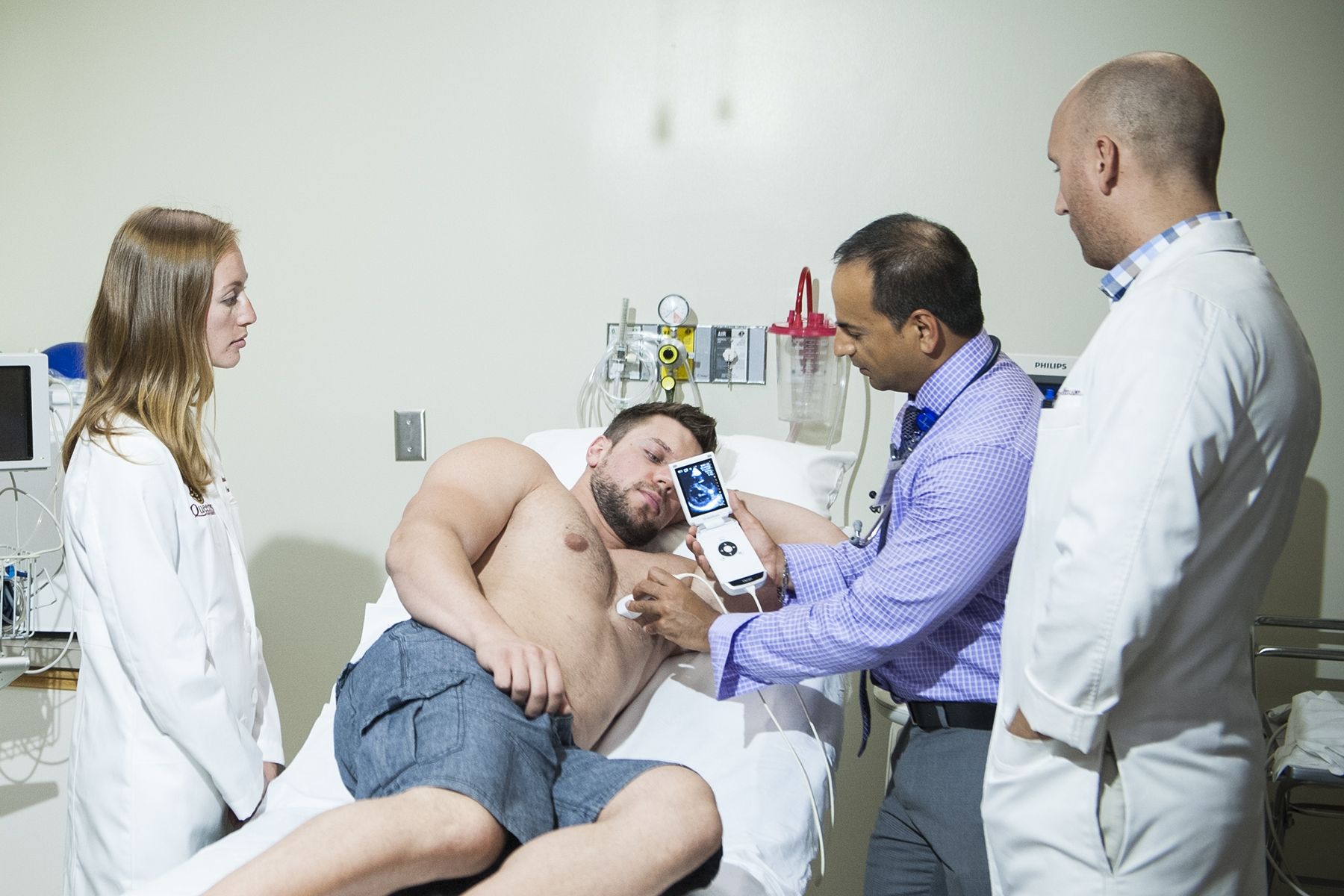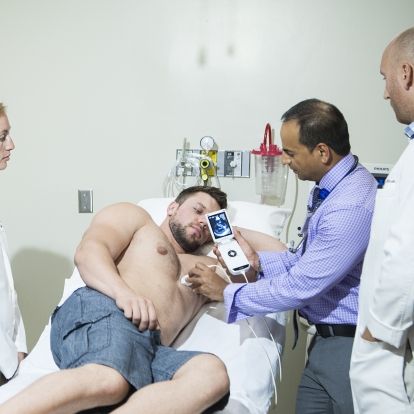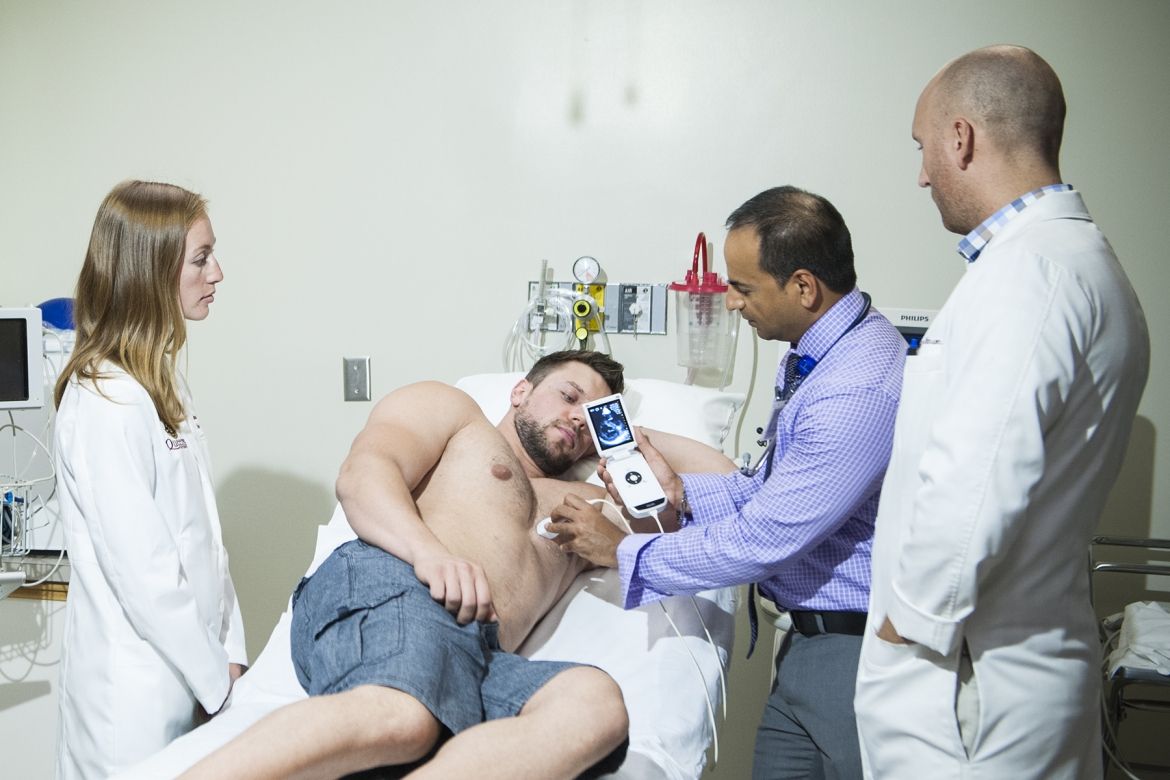Effective immediately masking is required for everyone when present on all inpatient units, in the Emergency Department (ED), the Urgent Care Centre (UCC), and the Children’s Outpatient Centre (COPC).

Just as 3-D technologies are revolutionizing the worlds of entertainment and printing, the power of 3-D imaging is transforming health care. For Dr. Amer Johri, a clinician scientist at Kingston General Hospital and assistant professor of echocardiography at Queen’s University, the rapid growth of 3-D ultrasound imaging of the heart and vascular system opens up promising opportunities for advancing both patient care and doctors’ clinical skills.
Dr. Johri, who holds the distinction of Fellow of the American Society of Echocardiography for his contributions to the field of ultrasound, has made progress on both fronts. Returning to Queen’s in 2010 after completing an advanced fellowship in echocardiography at Harvard University Medical School, he created the Cardiovascular Imaging Network at Queen’s (CINQ) as a way to build existing, but disparate, pockets of strength in heart research into an investigative hub focused on imaging.
“I saw it as a home for people interested in cardiovascular imaging, as a way to share resources and expertise,” he says. “I knew what resources were available, what would work, and I had good relationships with the cardiologists. It was fun to start something from scratch.”
One of the centre’s significant areas of research is in the use of 3-D ultrasound imaging of the carotid arteries, the major blood vessels in the neck, to detect heart disease. “Quantifying the buildup of the fatty deposits called plaque in the neck vessels can be a predictor of blockages elsewhere,” Dr. Johri explains.
It’s a relatively new area of research in which his group has already made an impact, he says. “Our results indicate that complete carotid ultrasound may serve as a simple, inexpensive, and low-risk test to rule out significant atherosclerotic cardiovascular disease.”
The Network is also looking at measuring heart function through changes in the heart muscle not visible to the naked eye, using an advanced imaging technology known as ‘strain’ or ‘speckle-tracking’.
A third study, conducted in collaboration with researchers at the Robarts Research Institute in London, ON, will incorporate 3-D ultrasound into examining the effects of Carnitine, a naturally occurring compound found in the body as well as in some foods, on patients with Metabolic Syndrome, the multiple conditions associated with heart disease that include obesity, diabetes, high blood pressure and high cholesterol.
While the compound has already been shown to improve blood pressure and insulin levels, Dr. Johri says, its effect on atherosclerosis has never been studied in humans. Still in its early stages, the Phase II study is benefiting from the participation of other collaborators in the cardiac field, including the Kingston Heart Clinic, where patients have volunteered to take part. The study was awarded a prestigous Heart and Stroke Foundation of Canada grant and also received support from the Department of Medicine and the Southeastern Ontario Academic Medical Organization (SEAMO).
Advancements in ultrasound are also making a difference in how doctors examine their patients. In collaboration with Dr. Anthony Sanfilippo, in 2010 the CINQ lab began training medical students to use portable hand-held ultrasound into their physical exams of cardiac patients, making Queen’s Medical School one of the first to apply the emerging technology to clinical practice. Students love the idea for its speed of imaging and diagnosis, he says, and other medical schools have since adopted the practice. This program was highlighted nationally on CTV news.
All of the above are made possible because of hospital commitments to patient-oriented research, Dr. Johri says. "It’s why I love the idea of the KGH Research Institute, because it supports the idea that research is important.” By integrating a research ethos into clinical practice, patients, practitioners and their hospitals all benefit, he says. To learn more about Dr. Johri’s research, please see his website - Cardiovascular Imaging Network or follow him on twitter @amerjohri.
Contributed by: Mary Anne Beaudette, Communications Consultant, KGH Research Institute.
Gallery


Dr. Amer Johri a clinician scientist at Kingston General Hospital Research Institute demonstrates the use of a portable hand-held ultrasound at a patient's bedside.



